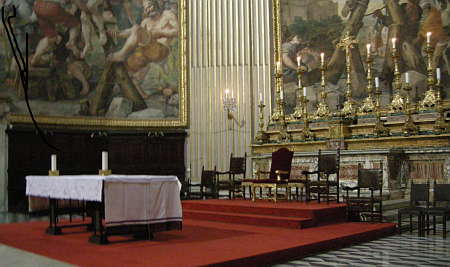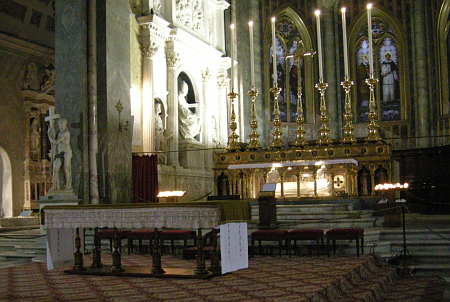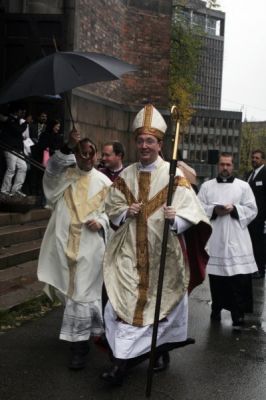10 år i dag siden felleserklæringa om rettferdiggjørelsen ble undertegna i Augsburg
«Søndag 31. oktober 1999, etter et langt, grundig og til tider komplisert forarbeid, ble Felleserklæringen om rettferdiggjørelseslæren undertegnet av høytstående representanter for Den katolske kirke og Det lutherske verdensforbund, i Augsburg i Tyskland.
Også i Norge ble begivenheten markert på høyeste hold med økumeniske gudstjenester. I Oslo skjedde hovedmarkeringen 28. oktober med en økumenisk takkegudstjeneste den lutherske domkirken, der den lutherske biskop Gunnar Stålsett og den katolske biskop Gerhard Schwenzer deltok sammen med en rekke sentrale lutherske og katolske representanter.»
I dag må man nok si at oppslutninga om 10 års-jubileet for denne dagen var nokså mye mindre, da den ble markert i Oslo Vestre Frikrirke kl 15.00. (Se informasjon om samlinga på katolsk.no.) Men det var svært hyggelig for meg å være der, og treffe mange gamle venner både fra Den norske kirke, Den lutherske frikirke og Metodistkirken – flere av dem hadde jeg ikke sett siden jeg forlot den lutherske kirke i 1994.
Selv om det var hyggelig, og selv om erklæringa er viktig på flere måter, fikk man også i dag intrykket av at lutheranerne tar den mer alvorlig enn vi katolikker gjør. (Det ble bl.a. nevnt også i dag at noen var skuffet etter 1999, at denne erklæringa ikke umiddelbart første til felleskommunion! Noe vi katolikker ikke en gang hadde tenkt på, siden dette jo handla om forståelsen av rettferdiggjørelsen og ikke på noen måte om felles kommunion.)
Jeg skrev en artikkel om denne felleserklæring i 2002 (les den her), og der skriver jeg bl.a.:
I forarbeidet til denne artikkelen skrev jeg til flere av mine embetsbrødre i den katolske kirke, og fikk bl.a. disse ganske ulike, men svært interessante reaksjonene:
* Enigheten er nok en moden frukt. (Den katolske presten) van der Burg utgav bl.a. i 1973 en bok (på eget forlag) som han kalte «Forskjellen mellom katolisismen og protestantismen». Her skriver han om læren om rettferdiggjørelsen på s. 18: «Dog er det for tiden neppe noen reell forskjell mellom den katolske og den nå alminnelige lutherske oppfatning i denne sak».
* Interessant er den konklusjonen flere katolikker trakk i forbindelse med arbeidet i den katolsk-lutherske samtalegruppen, mot slutten av gruppens arbeid med rettferdiggjørelsen i 1991. En sa: «Jeg har vondt for å se at uenigheten angående rettferdiggjørelseslæren fra vår side skulle være av kirkeskillende karakter». Dette synes jeg bekreftes av den internasjonale erklæringen.
* Når sant skal sies så husker jeg knapt at det kom til noe reaksjon i vår Kirke lokalt, annet enn at enkelte syntes det var hyggelig at man var blitt enig om noe viktig. Men blant katolikker flest ble vel rettferdiggjørelsesproblematikken knapt opplevd som særlig sentral, og slett ikke at alt skulle stå og falle med det.
* Det er tydelige forskjeller i innfallsvinklene når man snakker om rettferdiggjørelsen, men fra katolske side tror jeg ikke de overskrider grensen for det som er til å leve med. Jeg pleier å tilføye, at har vi klart å leve med Augustin i 1600 år, må vi kunne makte å leve med den lutherske oppfatningen av rettferdiggjørelsen også. Men så er vi da ikke så dogmatisk finstilte som våre lutherske venner ….
* Personlig har jeg hatt et inntrykk av at det i Norge, på protestantisk hold, trekkes helt urealistiske veksler på denne erklæringen. Det leses konsekvenser eller føringer ut av den som synes meg helt overdrevne.
* Når denne erklæringen er blitt hausset opp slik, er det ikke bare fordi de involverte i forarbeidet har arbeidet så lenge og tungt med den. Men jeg tror det er fordi man fra luthersk ståsted betrakter dette med rettferdiggjøringslæren som den ene store krumtappen. Alt annet blekner i betydning. Så foretas kortslutningen at dersom vi er så tilnærmet enige om denne lære, da må nødvendigvis alle andre hindringer klappe sammen som ved en slags domino-effekt – nattverdsfelleskap, embedsanerkjennelse, etc.

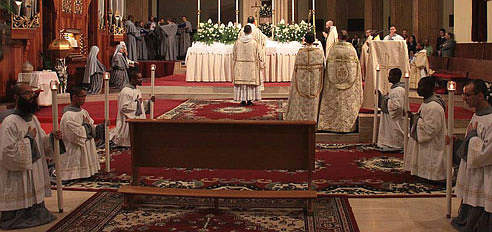

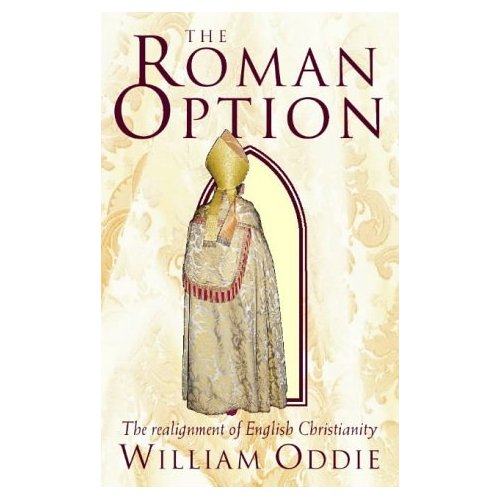 I kommentaren til Thompsons stykke referes det også til ei bok som kom ut i 1997 (og som jeg leste da), om katolske biskoper og presters respons til de mange engelske preste-konvertittene i England i 1992/93 – og en mulig måte å løse den unfordringa på om den skulle oppstå på nytt.
I kommentaren til Thompsons stykke referes det også til ei bok som kom ut i 1997 (og som jeg leste da), om katolske biskoper og presters respons til de mange engelske preste-konvertittene i England i 1992/93 – og en mulig måte å løse den unfordringa på om den skulle oppstå på nytt. 